Chicago Steak Co. Porterhouse: Thermometers NOT Optional
If you’re looking for luxurious eating, there is nothing much better than a porterhouse steak. And if you’re after the true height of luxury, it doesn’t get much better than a prime porterhouse steak from the Chicago Steak Company.
Our friends at the Chicago Steak Company sent us a box of 20 oz. prime-grade, wet-aged, premium Angus porterhouses to try out, and they were amazing. But here’s the thing about a prime piece of beef like these that usually retails for about $90 per steak: you do not want to overcook them.
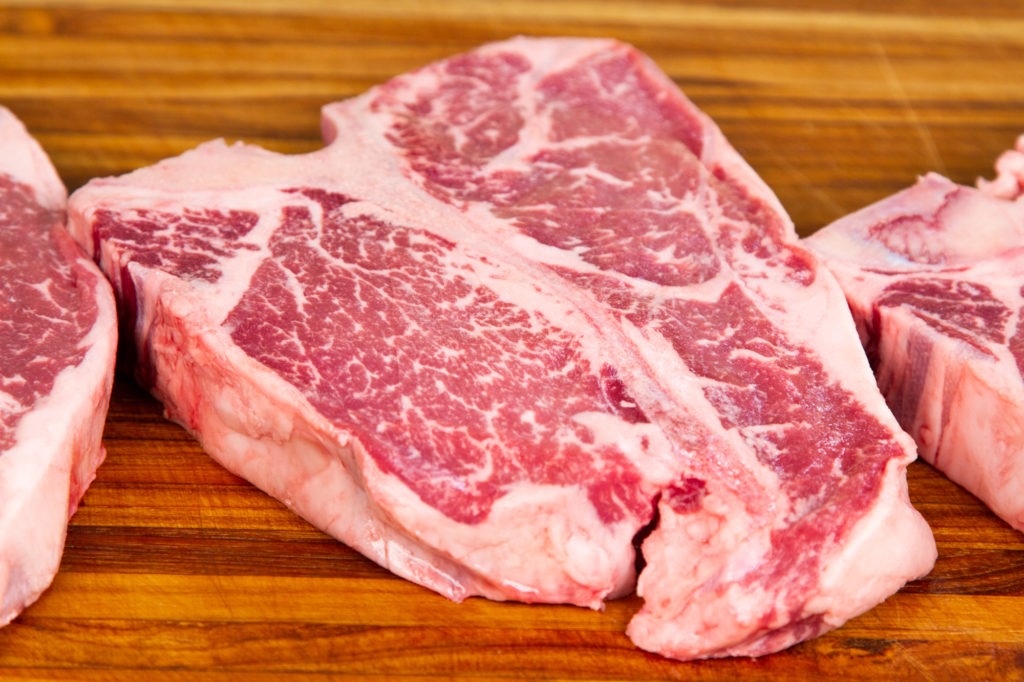
If you are generous enough to cook multiple steaks for your friends or family, you’re looking at multiple hundreds of dollars going into the oven or grill before the night is done. When you’re looking at a spend like that on a dinner, a Thermapen® is a necessary insurance policy against overcooking. With meat like that on the line, it’s no time to trust a $15 box-store thermometer!
What Is A Porterhouse Steak?
The porterhouse comes from the sweet spot on the loin of beef where you have both a NY strip steak and a tenderloin filet lined up across the T-shaped lumbar vertebrae from each other. It is actually two steaks that have not been cut apart. This is, of course, similar to the more pedestrian T-bone steak, but to be a “porterhouse,” the steak has to have a more substantial chunk of tenderloin—at least one and a half inches across, according to the USDA.
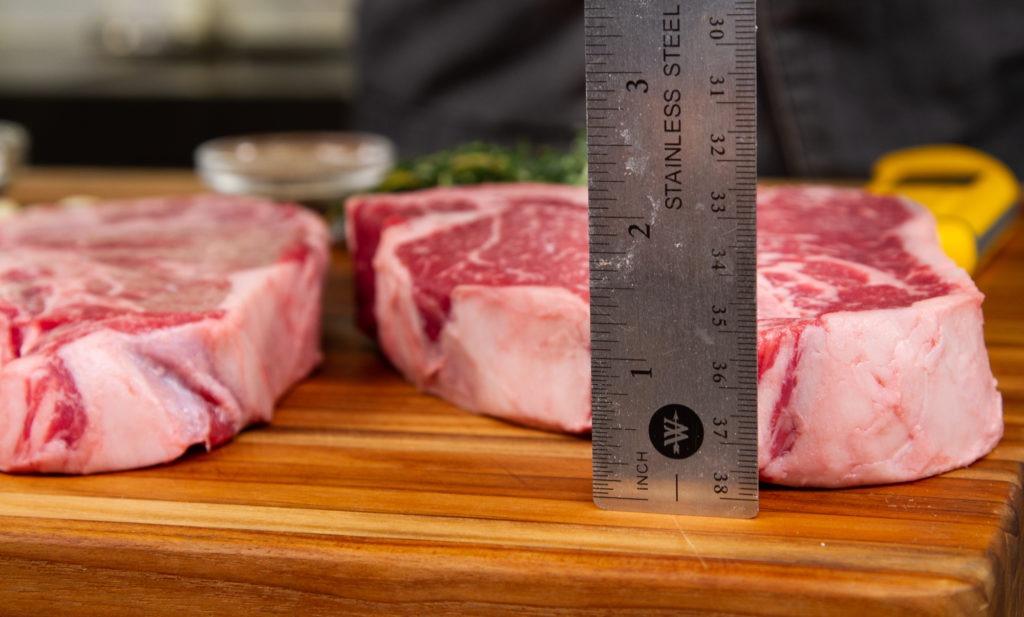
There are precious few of these babies on each cow, which is why, in addition to their sheer magnitude, the porterhouse tends to be such an expensive cut. (For more on the steak cuts, check out our Steak Guide.)
How To Cook A Porterhouse
The anatomy of having two different steak cuts separated by a bone makes cooking the porterhouse tricky. The tenderloin side tends to cook more quickly while the NY strip side takes a little longer to come up to doneness temp. And not only do the two types of meat want to cook at different rates, but the bone itself also poses a logistical problem. As the meat cooks, the muscle fibers tighten and shrink, making the bone stick out more relative to the steaks and moving the meat away from the searing surface of the pan.
For this and other reasons, broiling under high heat in a cast iron pan is one of the best ways to cook a porterhouse. You get great heat on both sides of the steak leading to a killer sear.
Before you get cooking, make sure your steaks are properly thawed. Use your Thermapen to temp your steaks after a night of thawing in the refrigerator to make sure they are above 32°F (0°C) internal temperature. You don’t want to risk putting thicker cut steaks in the pan while they are still partially frozen inside. That would result in uneven cooking.
As far as seasoning goes, a fantastic steak like this needs nothing much more than salt and pepper, so skip the spicy rubs and Montreal seasoning and let the meat do the talking. After all, that’s what you paid for, isn’t it?
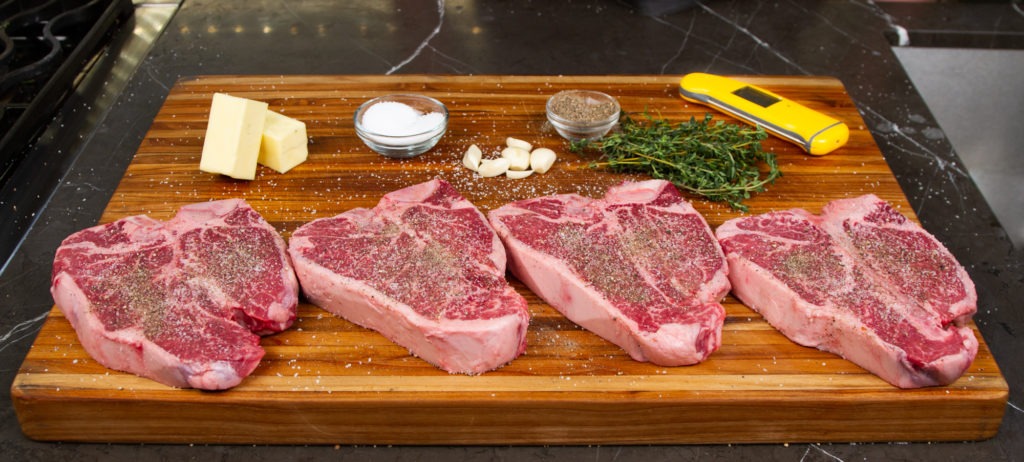
To broil a porterhouse, you need a hot pan and a hot broiler. Salt and pepper your steaks and then preheat your cast-iron pan (perfect for its high heat capacity) under the broiler for about 10 minutes, until it is literally smoking hot.
At this point, open the oven and add a tablespoon of high-smoke point oil (such as corn or peanut oil) to the pan, enough to coat the bottom, then carefully place your steak in the pan. Slide the steak in the pan back directly under the broiler, ideally about 3-4 inches from the heating elements themselves.
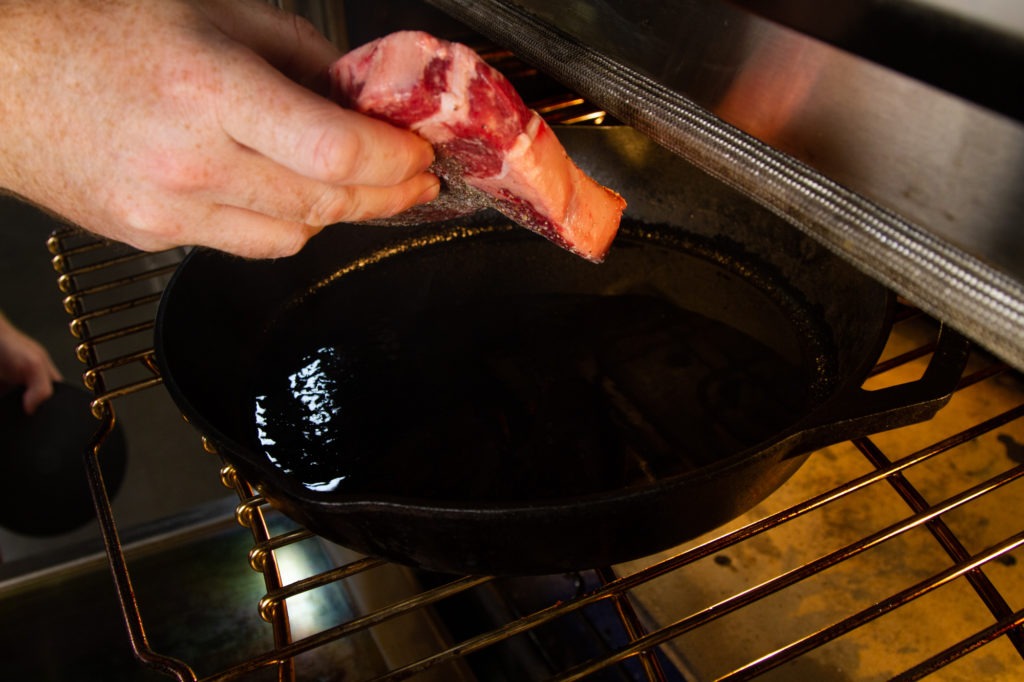
Cook each steak for about 3 minutes before checking to see how your sear is looking on the pan-side of the steak. Because the seared side of the steak will continue to be exposed to the high heat of the broiler after you flip it, you’re really looking for a nice golden brown crust, not a fully-formed crunchy brown crust when it’s time to flip.
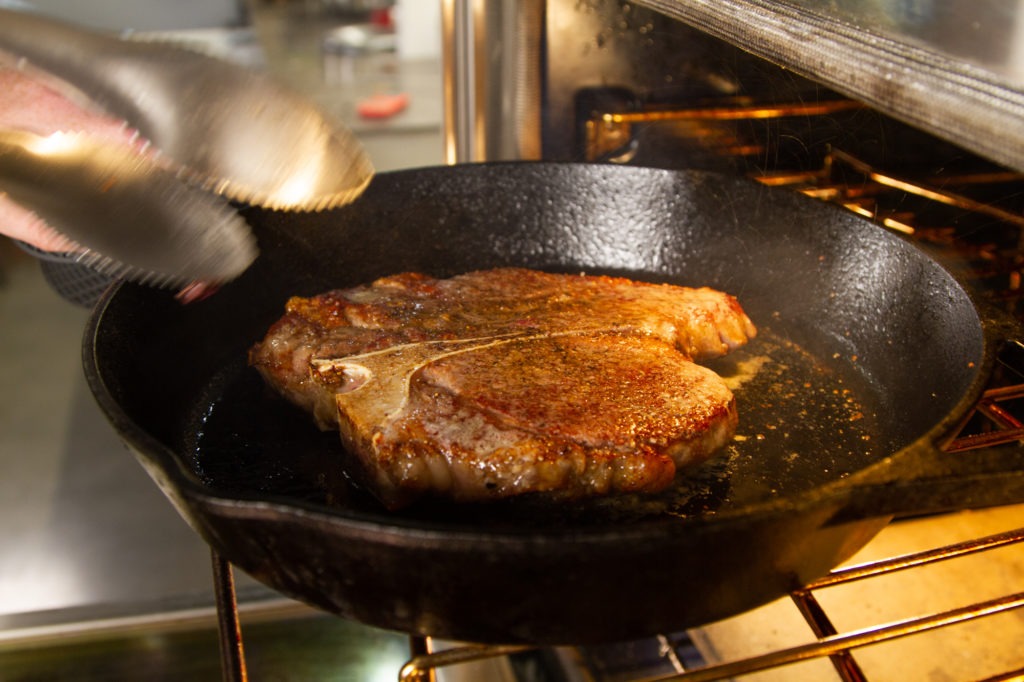
Searing the steak properly is all about the high heat of the broiler and the color of the steak surface but, of course, the internal doneness of your steak is all about the internal temperature of the steak itself. So, as soon as you flip the steak to sear the other side, take a quick read on your internal doneness with your Thermapen® (after the initial sear, you should be in the 80–100°F range [27–38°C]). This will give you a sense for how much longer you have to sear the second side without overcooking the interior of the steak.
This is a tricky balance. Our initial intuition was to get another probe in there—a leave-in probe like the ChefAlarm probe—to track that internal temperature, but the high, direct heat environment of the broiler is too hot for even Pro-Series or Type K probe transitions. So you’ll want to check your steak at regular intervals during this second side sear. It should take slightly less time—two minutes or so—but your Thermapen® should really be your guide…
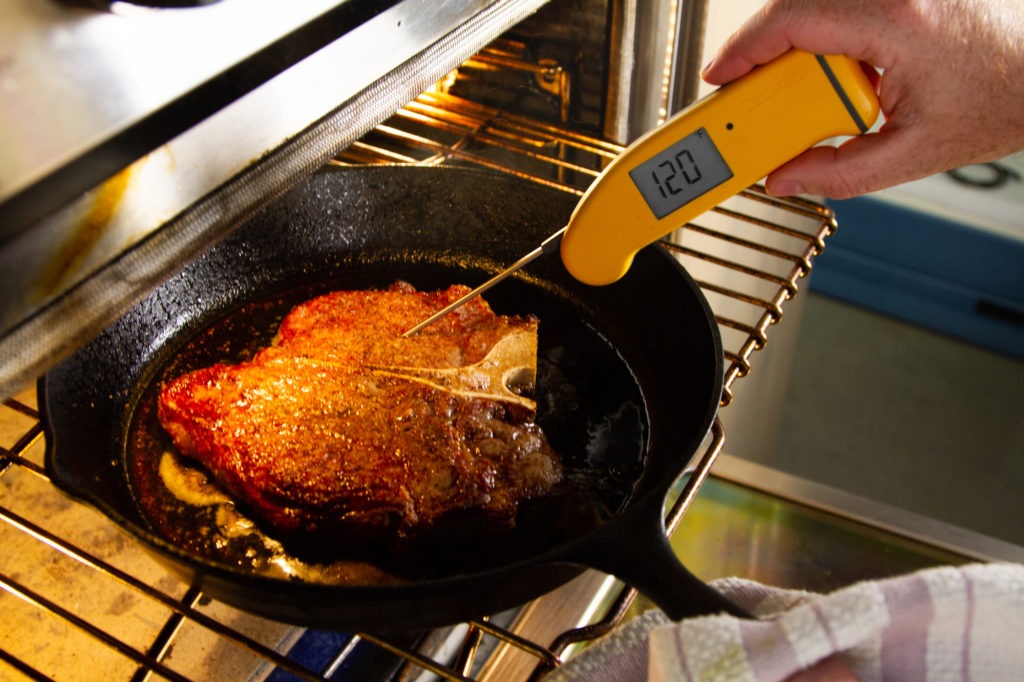
Critical Porterhouse Doneness Temperatures
Keep in mind that thicker cut steaks like this porterhouse will experience up to a full 5°F (2.8°C) of carryover cooking after being removed from the heat. You’ll want to remember that when calculating your ideal pull temp (read here for more on steak temps). A beautiful porterhouse like this really is best cooked to medium rare, 130–134°F (55–57°C) final temperature, but you can cook it more to medium (135-145°F [57-63°C]) according to your individual taste.
With that higher carryover in mind, a perfect medium rare steak will need to be pulled from the oven between 125–129°F (52–54°C) and taken immediately out of the hot pan to rest. (Note: If you leave it to rest in the pan, it will definitely overcook!)
Finishing in the Pan with a Butter Baste
Broiling alone is acceptable but if you really want to give a steak like this some extra love, you can poêler it to finish. Poêler (pronounced PWAH-leh) is a French term that translates ‘to fry,’ and is chef-speak for basting something with hot melted butter—and, really, why wouldn’t you do this?
To finish your steaks this way, pull them an extra 5°F (2.8°C) early, or a full 10°F (5.6°C) below your target finish temperature, and place the already heated cast-iron pan over medium-high heat on the stove. For our perfect medium rare, we pulled our porterhouse steaks from the second sear at 120°F (49°C) and put them on the stove.
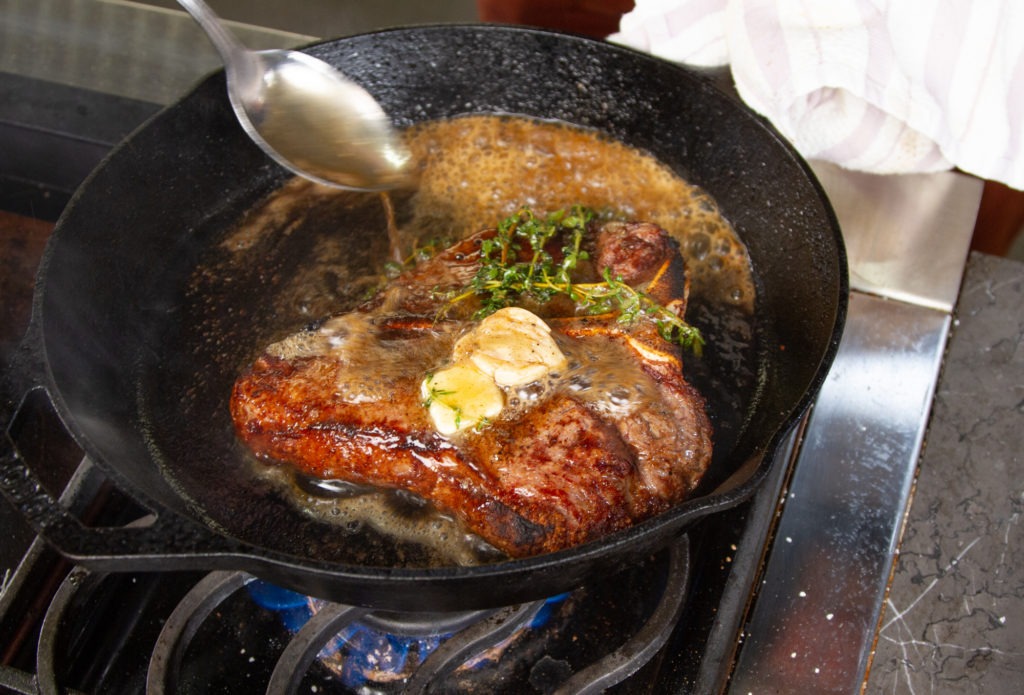
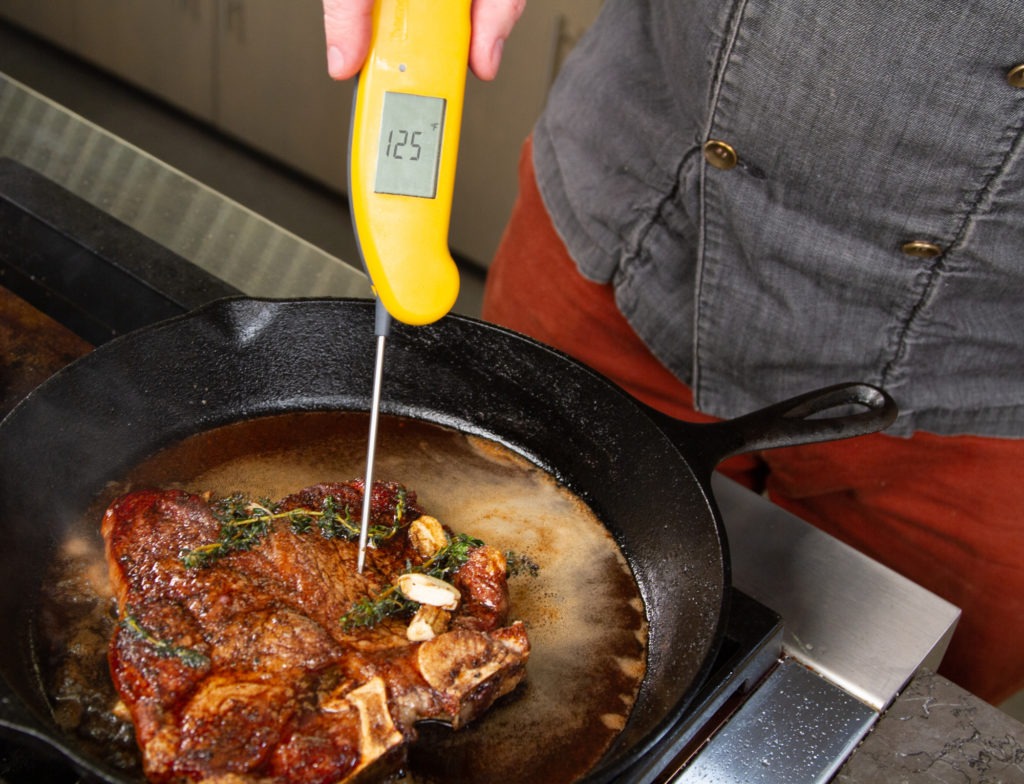
Add about a tablespoon of butter, a few sprigs of fresh thyme, and a crushed clove of garlic. Tilt the pan toward yourself using a good hot pad or silicone trivet to hold the handle. Use a large spoon to toss the hot, sizzling butter up onto the steak, allowing the garlic and thyme to sit on the steak, releasing their flavors into the hot beef fat and butter. Baste the steak in this way for about 30 seconds, and then remove it from the hot pan to rest.
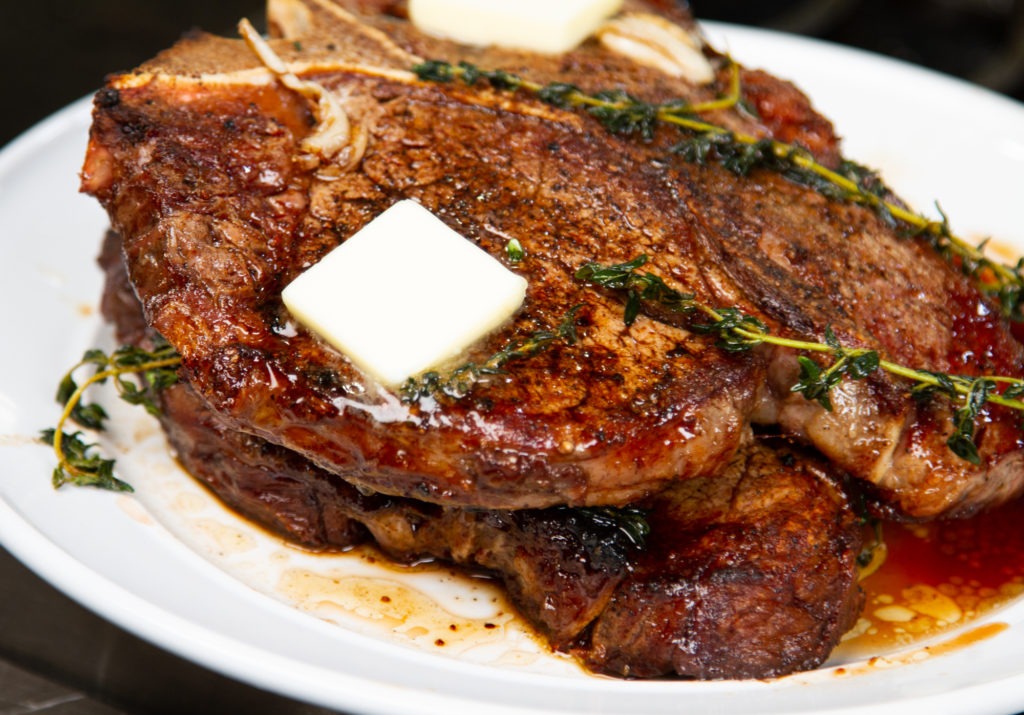
Resting the steak will be very, very difficult, as it will smell like, well, heaven, but it is a critical step to allow the steak to equilibrate and the juices to be reabsorbed into the muscle fibers. Once the porterhouse is finished and rested, carve and serve.
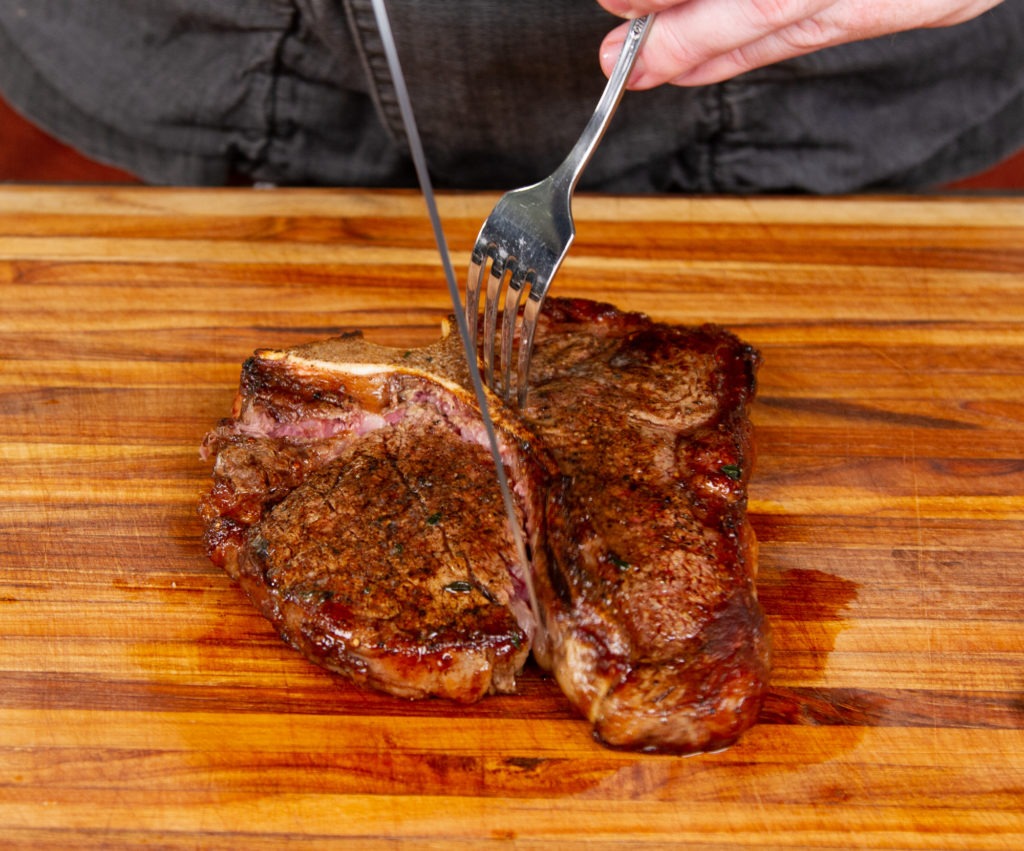
Often, porterhouses are served sliced and put back into place against the T-bone. To do this, cut each muscle section away from the bone, slice each steak into portions across the grain, and place it back into the cavity of the bone from whence it came. Dig in and feel free to gnaw on the bone when you’re done!
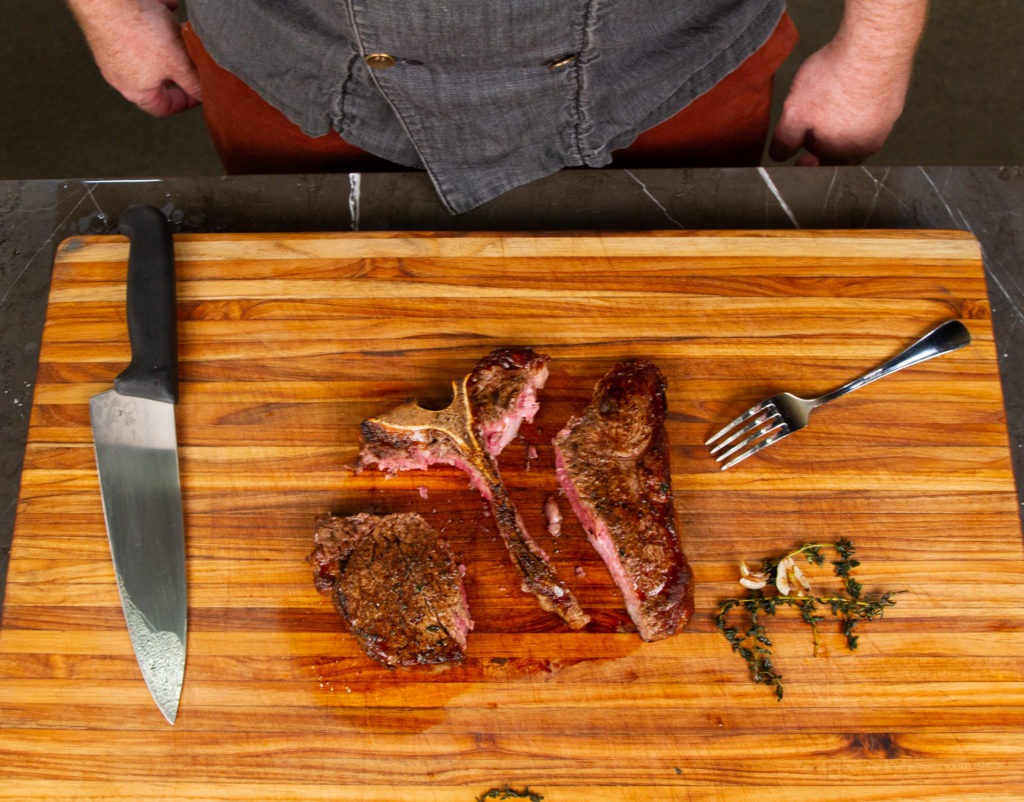
If you are as lucky as we were to get some of these extraordinary steaks, you’ll want to make sure that you cook them perfectly, and the only way to do that is with a fast and accurate thermometer like the Thermapen. The heat of the broiler and the speed of the cook is simply too much for other instant-read thermometers.
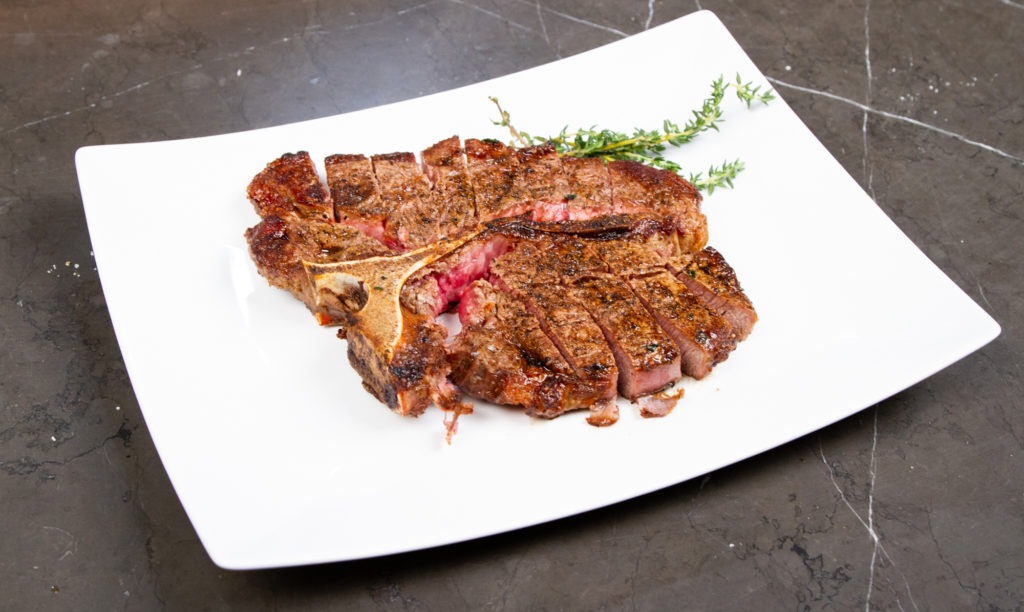
Try it out! Treat yourself to a prime-grade porterhouse cooked to perfection with ThermoWorks.
Shop now for products used in this post:
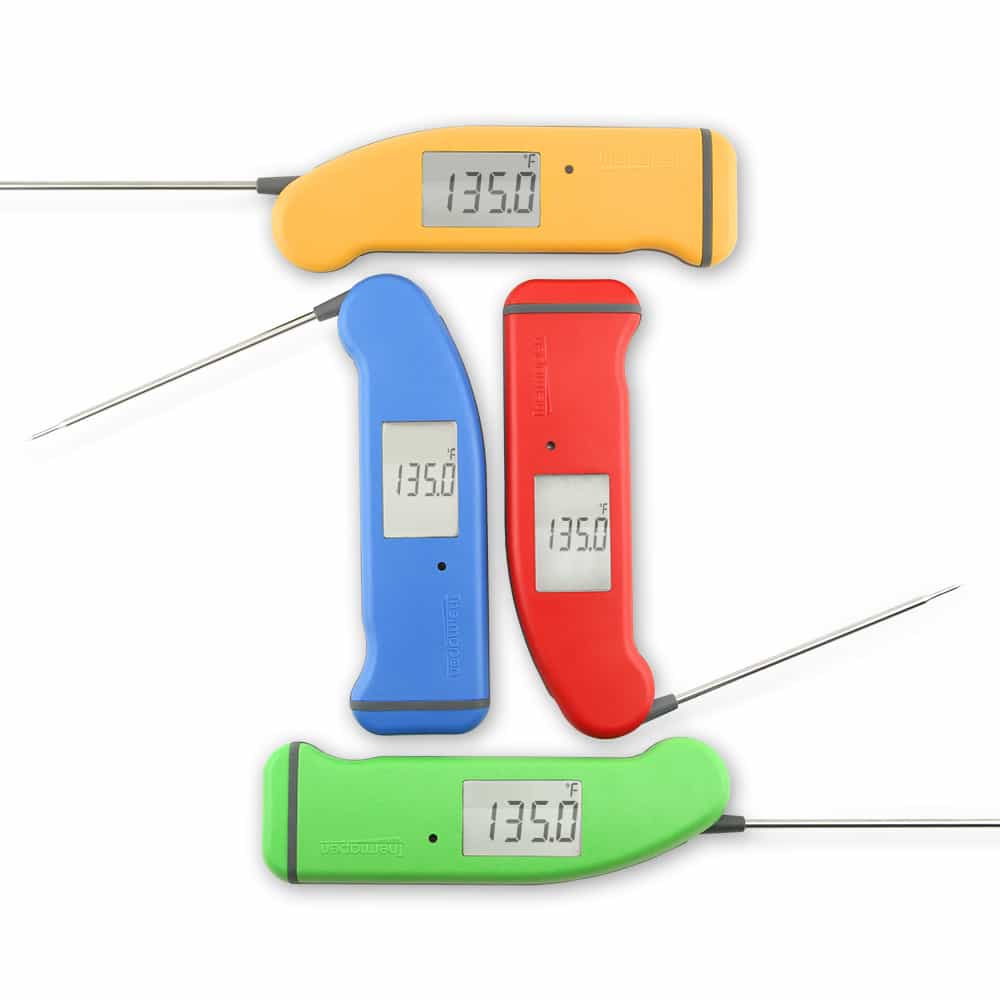


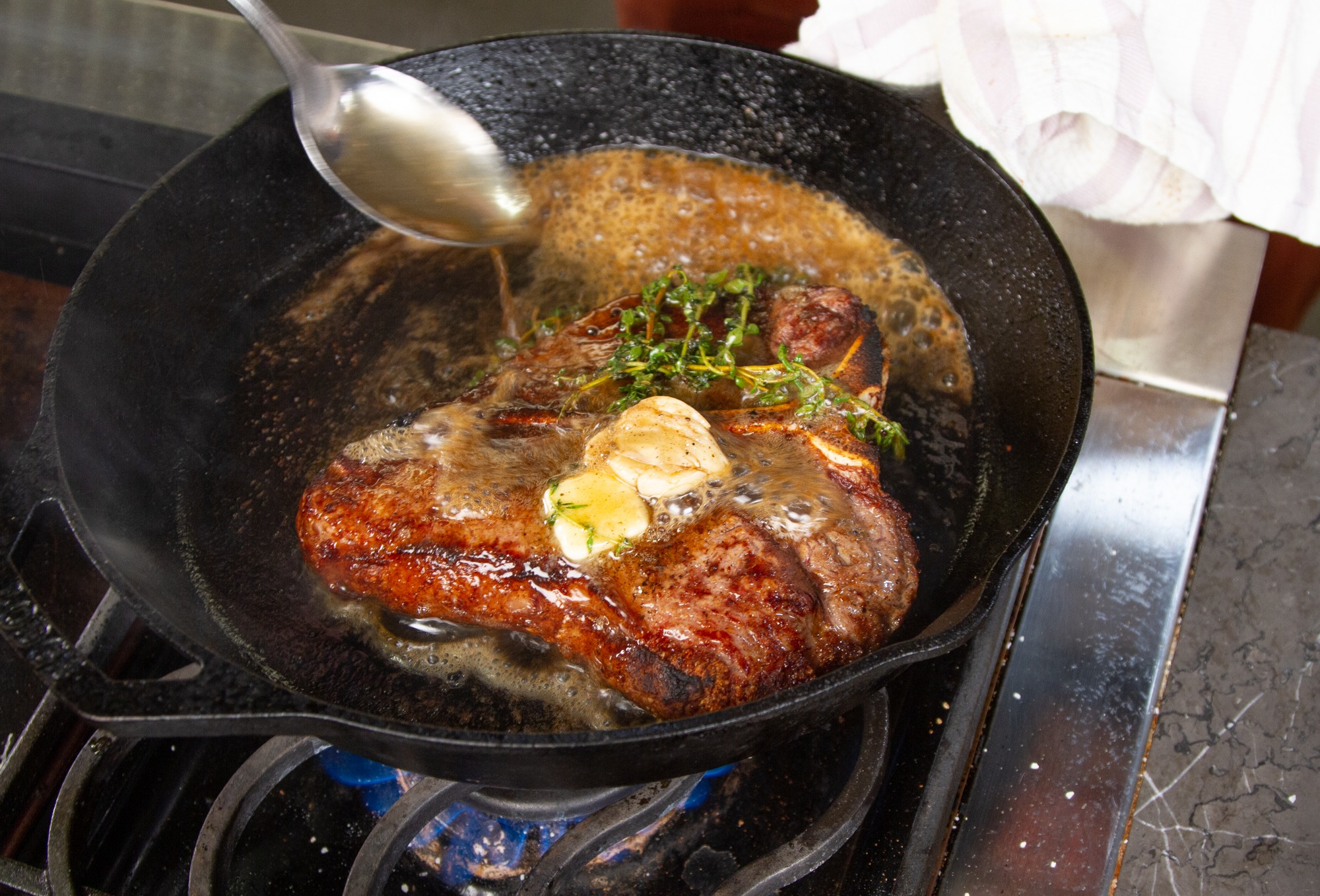
I have been preparing special meals in my properly seasoned cast iron skillet now for quite some time. I usually cook my steaks on my lynx gas grill, but after reading the above recommendations on properly cooking the porterhouse steak, they are going in the skillet as describe above. Thank you!
PS: I’m subscribed and need an Mk4 thermapen.
Thanks for the information. I see almost all stores and meat markets call a t-bone a porterhouse.
I always use my Thermapen MK-4
Or sous vide and poêler to finish. May even sous vide a bit under, not sure if 5o is too much, to allow more time searing and finishing.
It seems that slicing the entire steak before eating it would speed the cooling of the meat–
ugh!! I want mine scorching hot.
David,
By all means leave it whole and go to town on it! I totally understand!
I do my near 2″ porterhouse on my Camp Chef Woodwind smoker grill, after sitting with s&p only, until 190° by this time my side sear box is at maximum heat. Steak & thermo DOT temp probes on each side of steak removed, it is put on high temp, up to 900°, to sear & flame sear on each side & fat end. Done searing, onto tray & covered to rest 5 / 10 minutes, carve as it os now perfectly rare to med rare. Excellent method. Avg 175 to 200° GRILLING temp. Low & slow. Then fast sear
Now very hungry. Thank you for the detailed instructions.
Please consider providing a reasonable pan alternative to your readers who have a smoothtop stove – we cannot use cast iron because it will ruin the smoothtop’s finish! Thanks for your company’s great products, tips, and recipes.
David,
Any pan that has a heavy base and good heat retention qualities will do. A Black Steel pan would be fine, as would a heavy tri-ply pan.
Been using cast iron on my smooth cooktop for years,no scratches.
I have a Nepolien gas grill , season and seer the steak for 1 1/2 to 2 minutes a side on the seer burner with the rack in the higher position then move the steak to the grill , lndirect heat of 500 degrees for about another 2 to 3 min a side take of at 126 degrees f. let rest with a slice of butter on top , delicious. A great grilled taste .
Should steaks be salt and peppered an hour before cooking ? Also is cooking at room temperature best ? Thanks
Pat,
I like to salt and pepper pretty well in advance, but that’s personal preference. As for room temp, you can go either way. Cooking with a room-temp steak will require a slightly more vigilance, as you have a smaller heat buffer in the meat.
Sous Vide those babies and nail it and finish them as per the post.Precise temp. remember?
Yum!
That looked so good! I gotta have it! I could almost smell it!
Looks great but how do you manage 4 steaks at the same time?
Robert,
That is a problem. If you have two pans, you can do it two by two, but there is some lag between steaks with this method.
What a shame to see a great steak cooked in a cast iron pan in the oven. You guys should stick to making thermometers and refrain from showing folks how to ruin a prime Porterhouse. Awful.
Kevin,
We sure thought they were delicious! But the important thing is to not overcook, however it is that you choose to cook your steak. What is your prefered method?
You sure made me hungry, looks great.
Question: You mention making sure your steaks are not still frozen in the center, but you don’t mention bringing to room temp for 60-90 minutes pre-cooking.
I know that with thin cuts, you keep them cold so that you have more sear time before overcooking, eg: skirt steaks (entraña.) Are you purposefully keeping the center cold in order to not overcook while subjecting to the heat from both the pan and the broiler?
As long as you have a relatively uniform temperature in the steak, you should be fine. But yes, a uniform cooler temperature will guard against overcooking in thinner cuts. A large roast should often be brought to room temp, but steaks like these kind of skirt the line between the need to warm and the need to chill. I personally usually take steaks like this straight from the fridge to the pan.
You got me ! I’m on my way to the butcher now, I’ve had my thermapen for years now and it was the best $100 bucks I’ve ever spent !
Great!
Did you let the steaks come to room temperature before searing under the broiler?
Thanks
No, I didn’t. However, I didn’t refrigerate the last ones to cook while cooking the first ones.
According to Bon Appetit: (and elsewhere)
AVOCADO Oil.
High in monounsaturated fat (typically touted as a “good” fat), avocado oil has a smoke point of about 520˚, which makes it an efficient pantry item: Use it for sautéing, roasting, searing, and vinaigrettes alike. There’s no need to refrigerate it when opened, although it should be stored in a cool, dark cupboard.
I use it all the time for high heat. Neutral flavor. I first found it at Costco.
JMPO, I tried the cast iron oven method,butter,garlic with a 1-1/2″ Porterhouse, not to my liking, I prefer the grilled taste medium rare but first I salt,coarse pepper then ( COLD ) smoke with Hickory for 1 hour in my smoker then spray with (High Temp Pam) both sides place on grill, UUUMMM.
My dad always liked his rare, when eating out he would tell waiter, wipe it’s butt and bring it out.